Review: Forbidden Dreadnought
The original Dreadnought was a battleship that changed the game of naval combat back in 1906. With bigger guns, longer range, and faster steam turbine engines, they had a clear advantage over what went before. This sparked an arms race between Britain and Germany, and between the USA and Japan, to build as many dreadnoughts as possible. Keen history scholars will know the rivalry this race helped to create didn't end especially well.
There's a similarly fierce arms race going on today in the mountain bike industry, this time to build idler-equipped bikes. With the rearward axle paths of high pivot designs and lack of pedal kickback, some see them as having a clear advantage over other designs. We've seen desperate attempts by World Cup racers to shoehorn idlers onto existing bikes, and now most companies are cranking out downhill and enduro bikes built around an idler. Perhaps the Forbidden Dreadnought's name is a nod to the game-changing OG battleship. Maybe it just sounds cool.
Forbidden Dreadnought Details
• High single pivot suspension
• Full 29er, but mullet-compatible with Ziggy Link
• Carbon frame
• Travel: 170mm front, 154mm rear
• 64-degree head angle
• 78-degree effective seat angle
• Size-specific chainstay length (422-464mm)
• Weight: 15.4kg/34.0lbs (XL, stock, no pedals)
• Sizes: S, M, L, XL (tested)
• Price: $7,399 USD / $8,999 CAD / £6,399
• forbiddenbike.com
• High single pivot suspension
• Full 29er, but mullet-compatible with Ziggy Link
• Carbon frame
• Travel: 170mm front, 154mm rear
• 64-degree head angle
• 78-degree effective seat angle
• Size-specific chainstay length (422-464mm)
• Weight: 15.4kg/34.0lbs (XL, stock, no pedals)
• Sizes: S, M, L, XL (tested)
• Price: $7,399 USD / $8,999 CAD / £6,399
• forbiddenbike.com
When Forbidden launched the 130mm-travel Druid way back in 2019 they were among the first to offer a high pivot trail bike. The Dreadnought first appeared on our radar in February 2021. With 154mm of rear travel and much more aggressive geometry, it's closer to the long-travel category where other high-pivot bikes are placed. While Mike Kazimer got a first impression back in February, I've been putting one through its paces for a few months now, so I'm ready to go deep into the details of how it works and how it rides.
Frame Features
The single pivot design means there's only two main frame members: the mainframe and swingarm, both of which are made form carbon fiber. One of Forbidden's most interesting features is that the chainstay length is different for each frame size, but to save on expensive carbon molds, Forbidden use the same swingarm for all four sizes. To create the change in rear-center length, the main pivot moves back relative to the BB as the frame size increases, so all the change happens in the mainframe, which needs to change anyway. And thanks to the idler pulley, Forbidden can change the positioning of the main pivot relative to the BB without affecting the suspension kinematics. It's a pretty clever design.
The frame is tested to downhill standards and is dual-crown compatible. A 190mm-travel dual crown fork has a similar axle to crown measurement to the 170mm stock fork, so it's not an issue if you want to go there. But given the relatively short rear travel, I'm not convinced you need to.
There's plenty of room for a full-size water bottle, plus there's an accessory mount on the top tube for an inner tube, tool or whatever else. There's a little more storage space under the downtube with a two-bolt plastic cover which hides a space big enough for a tube or smuggled snacks. It also allows access to the internal cable routing for the dropper post.
The single pivot design means there's only two main frame members: the mainframe and swingarm, both of which are made form carbon fiber. One of Forbidden's most interesting features is that the chainstay length is different for each frame size, but to save on expensive carbon molds, Forbidden use the same swingarm for all four sizes. To create the change in rear-center length, the main pivot moves back relative to the BB as the frame size increases, so all the change happens in the mainframe, which needs to change anyway. And thanks to the idler pulley, Forbidden can change the positioning of the main pivot relative to the BB without affecting the suspension kinematics. It's a pretty clever design.
The frame is tested to downhill standards and is dual-crown compatible. A 190mm-travel dual crown fork has a similar axle to crown measurement to the 170mm stock fork, so it's not an issue if you want to go there. But given the relatively short rear travel, I'm not convinced you need to.
There's plenty of room for a full-size water bottle, plus there's an accessory mount on the top tube for an inner tube, tool or whatever else. There's a little more storage space under the downtube with a two-bolt plastic cover which hides a space big enough for a tube or smuggled snacks. It also allows access to the internal cable routing for the dropper post.
Geometry & Sizing
While many bikes have the same chainstay length in all sizes, and some brands change the rear-center by a few millimetres across the size range, the Dreadnought sees a whopping 40mm difference in rear-center between a small and an XL. Forbidden can claim to have genuinely proportionate sizing, because the ratio of the rear-center length to the wheelbase (which defines the weight distribution between the wheels) is 35% for all frame sizes.
But because of the high pivot, the rear-center gets longer as the suspension compresses: the XL has a 464mm chainstay at 0% travel, but this grows to around 480mm at sag and 495mm at bottom out. That makes it one of the longest rear-centers of any mountain bike. This means the ratio of rear-center to wheelbase increases throughout the travel, meaning more of the weight from your feet is loaded onto the front tire, helping it to grip.
The overall wheelbase of most bikes shrinks dramatically as the front and rear suspension compress together, as the axle path of the fork is highly rearward and the axle path of the rear is usually slightly forwards. But the wheelbase of the Dreadnought stays pretty consistent in this case. At bottom out, the wheelbase of the XL Dreadnought is longer than an XXL Geometron G1 at bottom out.
The reach is not overly long for an XL bike at 506mm, and the stack is on the shorter side too, at 639mm, making for a cockpit that's not the most stretched-out.
I measured all the major geometry figures on my XL test bike to check they match up with the above geometry table. The only discrepancies were that I measured the effective seat angle at my pedaling height at 75.6-degrees, the head angle at 63.2-degrees, and the bottom bracket height at 342mm from the ground.
Suspension Design
The main pivot sits high above the axle, creating an axle-path that moves up and back (never forward) in an arc that starts at 70-degrees from horizontal, and finishes up near vertical. This means large, square edge bumps, which impart a partially rearward force on the wheel, will have an easier time pushing the suspension through its travel compared to purely vertical loads, such as the reaction force when you push the bike into the ground. The larger the bump, the more rearward the force, because the force acts radially inward from the point where the bump contacts the wheel. So for example, a 5cm-high square bump creates a force at 60-degrees from horizontal with a 29" wheel, but for a 10cm bump, it's 45-degrees.
The rearward axle path means that some of this rearward force is handled by the suspension, so the horizontal deceleration you feel when you hit a bump may be less abrupt. However, this doesn't necessarily mean that it helps the bike to carry speed, because although the horizontal forces may be less, they act over a longer time because the wheel is in contact with the bump for longer. Another potential benefit of the rearward axle path is that, by increasing the time the wheel has to get over the bump, it reduces the peak vertical speed of the wheel, which may lead to a smoother ride. The theory on axle path is more complex than it's often made out, so the proof is in the riding.
The idler pulley is connected to the swingarm, but offset from the main pivot such that the chain passes through the pivot on its way from the idler to the chainring. This gives a small amount of upper chain growth and therefore pedal kickback as the suspension compresses, but much less than a conventional design with no idler. Another advantage of the high pivot & idler design is that it provides a generous amount of anti-squat while having very low levels of pedal kickback. That means if you land hard at low speed or hit a bump with the rear wheel locked up, you won't feel the cranks being rotated backward by the chain.
The swingarm pulls a link, which rotates a rocker just above the BB, which in turn drives the shock. All the pivots, including the shock mounts, run on bearings and there's very little friction in the system. The leverage ratio (the number of millimetres the axle moves for every millimetre the shock moves) starts fairly high, at 2.675, and ends very low, at 1.825. That gives it an overall progression of 32%, making it among the more progressive suspension designs. The shape of the leverage curve is a bit out of the ordinary too. The leverage ratio falls quickly to start with, then levels off a bit in the mid-stroke, then plummets downwards again towards the end of the travel. Especially when combined with an air shock, that makes the forces at the wheel build steeply towards the end of the travel.
The low final leverage ratio also amplifies the damping forces towards the end of the travel, which means the high-speed rebound should be run pretty light or the rebound from deep in the stroke will be slow.
Forbidden quotes the rear wheel travel at 154mm, but I measured the vertical rear wheel travel at 148mm by compressing the shock with a strap wrench and measuring the change in height of the rear axle. It turns out the 154mm figure is measured diagonally from top out to bottom out, including the rearward component (see the diagram opposite). Normally, rear suspension travel is measured in the vertical direction, and according to Forbidden, the Dreadnought should be producing 151mm of vertical travel. In my view, it's the vertical travel that matters for getting up and over bumps. The 3mm discrepancy between the vertical travel quoted by Forbidden and my measurement could be explained by the shock delivering about 1mm short on shock stroke, which is very common.
The first video shows how the rear-center grows when only the rear suspension compresses, first with the brake off, then with it on so the wheel rotates with the swing-arm. The second video shows how the wheelbase is relatively constant under heave compression (where the fork and shock compress together).
The high single pivot design means that if the brake is locked on, the wheel rotates with the swingarm as the suspension compresses. The high pivot means it also moves backwards relative to the mainframe. The combination of these two factors means that when you pull the brake while riding, the rearwards and rotational forces from braking both act to cause the suspension to compress. This counters the suspension's tendency to "rise" due to the transfer of weight onto the front tire when you brake, so this effect is called anti-rise or brake squat. The Dreadnought has particularly high levels of anti-rise, which means the chassis is more stable under braking (less brake dive) but, in theory, the suspension may be harsher due to the fact that it sits deeper into its travel under braking. But personally, I have never noticed this supposed harshness under braking with the Dreadnought, or other high anti-rise bikes.
| Specifications | ||
| Release Date | 2020 | |
| Price | $7399 | |
| Travel | 155mm (R) / 170mm (F) | |
| Rear Shock | Fox Float X2, PE, 205x65mm | |
| Fork | Fox 38 PE, GRIP2, 170mm, 44mm offset | |
| Headset | Cane Creek HellBender 70 | |
| Cassette | Shimano XT, 12s, 10-51t | |
| Crankarms | Shimano XT, 32T, 170mm | |
| Chainguide | e.13 TRS Plus with e.13 Custom Chainguide | |
| Bottom Bracket | Shimano Threaded, 73mm | |
| Pedals | N/A | |
| Rear Derailleur | Shimano XT, 12s | |
| Chain | Shimabo XT- 12s | |
| Front Derailleur | N/A | |
| Shifter Pods | Shimano XT, 12s | |
| Handlebar | e*thirteen Plus, 800mmx20mm rise | |
| Stem | e*thirteen Plus, 40mm, 35mm clamp | |
| Grips | Forbidden Tapered, single-lock | |
| Brakes | Shimano XT four-pot, 200mm/180mm rotors | |
| Hubs | DT Swiss 350, 18T ratchet, 6-bolt (R)/Center-lock (F), Boost, Microspline | |
| Spokes | 32, Double Butted, J-bend, brass nipples | |
| Rim | e*thirteen LG1 EN Plus, 30mm | |
| Tires | Maxxis Assegai 29"x2.5", EXO+ MaxTerra (F)/Maxxis DHR2, 29x2.4", DoubleDown, MaxTerra (R) | |
| Seat | SDG Radar Chromo | |
| Seatpost | BikeYoke Revive, S: 125mm, M: 160mm, L/XL:185mm | |
Test Bike Setup
Due to the progressive linkage, the Dreadnought ships without volume spacers in the shock, and they recommend around 32-38% sag. I felt no need to add volume spacers but found the shock too soft with much more than 32% seated sag. My final settings were 175psi (32% seated sag), no volume spacers, LSC 7, HSC 5, LSR 11, HSR 6 (all from closed). The fork was set up with two volume spacers and 96psi, HSR 2, LSR 14, compression varies depending on the terrain.
The main setup tweak was to ditch the 20mm-rise handlebar in favor of a 40mm, then 50mm rise bar to suit my 190cm height and make it easier to transfer weight fore and aft on the bike while keeping my elbows nicely bent. The stock bar made it too hard for me to get my weight back on steep descents or to manual. I also fitted a Rimpact tire insert in the front to give the EXO+ front tire more sidewall support and damping.
Due to the progressive linkage, the Dreadnought ships without volume spacers in the shock, and they recommend around 32-38% sag. I felt no need to add volume spacers but found the shock too soft with much more than 32% seated sag. My final settings were 175psi (32% seated sag), no volume spacers, LSC 7, HSC 5, LSR 11, HSR 6 (all from closed). The fork was set up with two volume spacers and 96psi, HSR 2, LSR 14, compression varies depending on the terrain.
The main setup tweak was to ditch the 20mm-rise handlebar in favor of a 40mm, then 50mm rise bar to suit my 190cm height and make it easier to transfer weight fore and aft on the bike while keeping my elbows nicely bent. The stock bar made it too hard for me to get my weight back on steep descents or to manual. I also fitted a Rimpact tire insert in the front to give the EXO+ front tire more sidewall support and damping.
Seb Stott
Location: Moumouthshire, UK
Age: 29
Height: 6'3" / 191cm
Inseam: 37" / 93cm
Weight: 189 lbs / 86 kg
Industry affiliations / sponsors: None
Instagram: Seb Stott On Bikes
Location: Moumouthshire, UK
Age: 29
Height: 6'3" / 191cm
Inseam: 37" / 93cm
Weight: 189 lbs / 86 kg
Industry affiliations / sponsors: None
Instagram: Seb Stott On Bikes
Climbing
The Dreadnought climbs well enough for an enduro/park bike, but not so well for a 150mm-travel, full-carbon 29er.
The progressive rear suspension needs to be set up with pretty generous sag in order to use its travel effectively on the descents (I'm running 32% which is the minimum recommended). This has an effect on the climbing performance. A 76-degree effective seat angle is not to be sniffed at, but once riding up hill with over 30% sag, the seated position is a little off the back by modern standards. I slammed the saddle all the way forwards, but I'd still prefer a more upright position especially when tackling steeper climbs. It's not that the front wheel was lifting - the long chainstay sees to that - but in my view a more upright position feels more comfortable and efficient, making the same climbs feel less of a chore.
The relatively high and consistent anti-squat figures mean there's not much bob under power, and if anything the bike lifts slightly when you pedal hard. But there's not much mid-stroke support from the shock itself, so when set up with light damping, it's quite active, moving around under weight shifts and oscillating slightly at high cadences with the movement of my legs. Fortunately, I found the suspension worked better for descending with relatively firm low- and high-speed compression damping, which was enough to cut this chassis movement considerably while climbing. Just goes to show that anti-squat isn't the only thing that matters for climbing performance and stability.
But still, I ended up reaching for the climb switch pretty regularly on this bike, not just to stabilize the suspension movement, but also to make the bike sit up a bit higher. The X2's climb switch isn't a particularly firm platform so the suspension can still move over bumps but it will still bob when sprinting. The Dreadnought doesn't feel as dynamic and responsive on the climbs as a lot of other bikes in the enduro category, even among those with ten or twenty millimeters more rear wheel travel.
The flip side is that the position is nice and roomy on flatter pedaling sections and the suspension is superb at soaking up undulations in the trail under power. During technical climbing, the traction is superb and pedaling over bumpy terrain is smoother and more consistent than with conventional bikes, even with the climb switch on. Just keep spinning and it will get to the top of tricky sections more easily than most bikes.
How much drag does the idler create?
I've done quite a lot of testing to find out if the Dreadnought is less efficient than non-idler bikes when climbing. There's a whole feature on this project on the way, but the bottom line is that in my tests the Dreadnought was six Watts, or about 2%, less efficient at delivering power to the rear wheel than a non-idler bike with the same chain at a 250W power output. That's too small a difference to justify anyone claiming that they can "feel" the extra drag, even if the slight noise of the idler gives a psychological sense of inefficiency. But on the other hand, if someone could make me go 2% faster up hill for the same effort, I wouldn't say no to that. I'm sure for some riders a 2% drop in efficiency will seem like nothing, but to others it's worth consideration.
The Dreadnought climbs well enough for an enduro/park bike, but not so well for a 150mm-travel, full-carbon 29er.
The progressive rear suspension needs to be set up with pretty generous sag in order to use its travel effectively on the descents (I'm running 32% which is the minimum recommended). This has an effect on the climbing performance. A 76-degree effective seat angle is not to be sniffed at, but once riding up hill with over 30% sag, the seated position is a little off the back by modern standards. I slammed the saddle all the way forwards, but I'd still prefer a more upright position especially when tackling steeper climbs. It's not that the front wheel was lifting - the long chainstay sees to that - but in my view a more upright position feels more comfortable and efficient, making the same climbs feel less of a chore.
The relatively high and consistent anti-squat figures mean there's not much bob under power, and if anything the bike lifts slightly when you pedal hard. But there's not much mid-stroke support from the shock itself, so when set up with light damping, it's quite active, moving around under weight shifts and oscillating slightly at high cadences with the movement of my legs. Fortunately, I found the suspension worked better for descending with relatively firm low- and high-speed compression damping, which was enough to cut this chassis movement considerably while climbing. Just goes to show that anti-squat isn't the only thing that matters for climbing performance and stability.
But still, I ended up reaching for the climb switch pretty regularly on this bike, not just to stabilize the suspension movement, but also to make the bike sit up a bit higher. The X2's climb switch isn't a particularly firm platform so the suspension can still move over bumps but it will still bob when sprinting. The Dreadnought doesn't feel as dynamic and responsive on the climbs as a lot of other bikes in the enduro category, even among those with ten or twenty millimeters more rear wheel travel.
The flip side is that the position is nice and roomy on flatter pedaling sections and the suspension is superb at soaking up undulations in the trail under power. During technical climbing, the traction is superb and pedaling over bumpy terrain is smoother and more consistent than with conventional bikes, even with the climb switch on. Just keep spinning and it will get to the top of tricky sections more easily than most bikes.
How much drag does the idler create?
I've done quite a lot of testing to find out if the Dreadnought is less efficient than non-idler bikes when climbing. There's a whole feature on this project on the way, but the bottom line is that in my tests the Dreadnought was six Watts, or about 2%, less efficient at delivering power to the rear wheel than a non-idler bike with the same chain at a 250W power output. That's too small a difference to justify anyone claiming that they can "feel" the extra drag, even if the slight noise of the idler gives a psychological sense of inefficiency. But on the other hand, if someone could make me go 2% faster up hill for the same effort, I wouldn't say no to that. I'm sure for some riders a 2% drop in efficiency will seem like nothing, but to others it's worth consideration.
Descending
The long 464mm chainstay length in the XL bike - which grows to around 480mm at sag and gets even longer as you push into the travel - is something you can feel straight away. Initiating a manual or a bunny-hop takes a bit of re-calibration; it requires slower timing and a more forceful, exaggerated style. The same's true on short-sharp jump faces where it's harder to pop off the lip at first. It's not like trying to hop an e-bike though, and once you get used to it it's less of an issue.
The flip side of this long back end is that it puts a bit more weight on the front wheel with a neutral riding position. That makes it easy to carry speed through fast, flat corners without fear of the front wheel washing out. It's possible to overstate this - it still pays to put a bit of pressure through the grips to get closer to a 50:50 weight distribution and keep the front wheel gripping, but if you're riding tired and you're not proactively weighting the front wheel the balance is better than other bikes. It's one of the easiest bikes to rip fast, flat or off-camber corners without the front end washing out.
Cornering the Dreadnought has its quirks too. Because the Dreadnought's chainstay gets longer as you push into a berm, it's a bit harder when you actually want to transfer weight to the rear wheel when slapping into a short, sharp catch-turn. I notice the dependable front-end traction more often than I notice this cornering quirk, however, and overall I'd say the Dreadnought is one of the best cornering bikes once you're used to it. It makes me want to try longer chainstays (460mm plus) on more bikes.
Another area where the long rear center was an occasional hindrance was on steep and awkward technical descents. The long dynamic chainstay reduces the breakover angle - the angle from the rear contact patch to the bash guard - so it grounds out more easily than you'd expect given the BB height. This meant that on one familiar track with a few steep knuckles, I had to consciously unweight the bike (a bit like dropping into a quarter pipe on a BMX) where other bikes can just roll through. Like with the manuals, this is something you can adapt to by learning where you need to go light to avoid grounding out, but it's not ideal if you ride a lot of awkward, technical terrain. It's worth remembering that the chainstay length grows with larger sizes while the BB height stays the same, so the breakover angle will be steeper on smaller sizes. I can only report on how the XL rides.
On the plus side, when tackling steep trails I like how the high-single-pivot responds to braking. I didn't notice any real harshness under braking despite the high anti-rise suspension, which could be down to my fast rebound settings preventing it from packing down despite the brake squat. Better still, the anti-rise causes the bike to hunker down at the rear like a Sumo wrestler when hard on the brakes, which means there's less brake dive and a more stable platform on steep descents. This could help explain why Fabien Barel and Connor Fearon used braking arms designed to increase anti-rise.
I rode the Dreadnought a few times at Bike Park Wales and Innerleithen DH trails, where there's a lot of fast and rough terrain. As expected, the Dreadnought really starts to come into its own here. There's tons of stability when battering through rocks at speed, and it's easy to trust the grip in loose turns. While the bike can be hard to pop off tiny lips, I had no complaints sailing off bigger takeoffs or pulling for natural gaps. More to the point, the suspension does a great job of smoothing out the small to mid-sized bumps. Wrist-sized roots are softened with very little feedback or loss of traction. Holding rooty off-camber high lines is more about technique and commitment than anything, but I felt able to commit and make them stick more often than I'd expect.
But when the terrain gets really chunky - big rocks or heavy landings - there's no hiding the fact this bike only has about 150mm of vertical travel. It's not that that it bottoms out much, in fact I only used full travel occasionally, but that you can feel the very progressive final 25% of the travel quite regularly on chunky terrain, which sends a lot of feedback through to your feet. I tried increasing the compression damping (low- and high-speed) until almost closed in order to absorb more energy earlier in the travel and avoid the firm ramp at the end, but at a certain point this increases harshness on smaller impacts and robs speed over repeated bumps. A coil spring would increase the mid-stroke support further, possibly meaning less of a sudden ramp towards the end. But the fundamental problem is the rear wheel can only move upwards by 150mm. It's not the always-forgiving ride you might expect from the high pivot design and the enduro/park bike designation.
That's not to say the high pivot design doesn't deliver - the rearward axle path definitely seems to reduce harshness over small-to-medium bumps, especially when compared to other 150mm travel bikes. But on big impacts it can only absorb so much. It's not that the suspension is harsh, but given the idler design has a few drawbacks I'd like a little more travel to fully unlock the benefits on the roughest descents.
Reliability
I've been riding this bike a lot over the last few months. In that time I've had two main issues:
Firstly, the rear shock eyelet bolt kept working loose even when torqued up to the recommended torque spec (or tighter). On one of the first rides, it worked loose to the point that it started rubbing on the carbon shock tunnel, where it caused some damage to the frame. This didn't cause any dramatic play, so I only noticed this when the suspension started to feel sticky and harsh. Loctite on the threads and regular checking of the bolt has solved the issue for now, but it's something to keep on top of.
Secondly, on two occasions the derailleur has gone into the spokes and ripped off, taking out several spokes with it and destroying the wheel, hanger and chain. Both times I was riding in the smaller end of the cassette, without pedaling or shifting, and without hitting anything obvious. On the second occasion, it happened in the middle of a smooth berm, so I'm sure I didn't hit the derailleur on anything. The second time, the derailleur hanger rotated such that it damaged the carbon swingarm too.
The question is, was this just a fluke or does the high pivot design, with a large amount of chain growth in the lower span, make this more likely? That's tough to answer - I've deflated the shock and compressed the suspension fully in all the gears, and I can't see any obvious problems: the cage has plenty of scope to extend and spool out enough chain. On the other hand, it's very rare to see two derailleurs break in the space of a few months, but broken derailleurs are a fact of life and it's not beyond the realms of possibility that two freak accidents could occur in the amount of riding I've done.
I've since rotated the chain guide clockwise so the lower chainline is more taut and has less growth. I've had no issues in the dozen or so rides since doing this, but whether that has anything to do with adjusting the guide, I don't know. Forbidden say this isn't a problem they've heard customers complaining of.
How does it compare?
One of the main questions I wanted to answer in this test was this: does high pivot suspension make up for the lack of travel compared to other bikes in the enduro/park bike category? The answer is a resounding ... sort of.
If you compare it to other 150mm-travel bikes like the Orbea Rallon then yes, I would definitely say the Dreadnought's suspension does a better job of taking the sting out of trail chatter. Not only have you got the rearward component of the travel helping to take the edge off the bumps, but the more progressive linkage makes it suppler on the small-to-midsize bumps without bottoming out. But the Rallon is more of a trail bike than an enduro bike in the modern sense of the word. It's lighter, more upright and has less chassis movement when pedaling than the Dreadnought, so when going uphill there's no contest. This is why judging bikes relative to their travel makes little sense.
Instead, it makes more sense to compare it to bikes with similar (or better) climbing abilities. If I compare it to something with a bit more travel like a Privater 161 (which I've been using as a control bike to test various forks, tires and other components, so I have a lot of miles on it) it's less clear-cut whether the Dreadnought's suspension still has the edge. On the one hand, the Forbidden flutters over roots and mid-sized rocks better, but on the other hand, the extra 10mm or so of squish is noticeable when hitting bigger hits. The Privateer's suspension is more linear, with more mid-travel support; this makes it more predictable and keeps more travel in reserve to absorb those bigger impacts. And despite being a weighty beast, the Privateer also climbs better, both subjectively and against the clock with a power meter.
These days, in the Dreadnought's price range there are plenty of bikes with 170 or 180mm of rear wheel travel that are not only lighter but more pedal-efficient than the Dreadnought, such as the Specialized Enduro or Nukeproof Giga. The 170mm-travel Scott Ransom stands out as an example of a bike with very supple suspension that's still ridiculously light and efficient on the climbs. Does the Dreadnought's high-pivot suspension allow it to catch up to these longer-travel machines on the descents? I don't think it does.
Technical Report
Shimano XT four-pot brakes: You probably know what I'm going to say here. While bite point consistency was better than many Shimano brakes, the lever would occasionally pull heart-stoppingly further than expected, especially when hauling on the brakes after long rough straights . Also, the brake pads rattled until I splayed-out the pad retaining springs to hold the pads still.
Fox 38 Performance Elite fork: The 38 is still the best performing single crown fork I've tested, and I've tested most of them. If there is a difference relative to the Kashima-coated Factory version, I can't feel it, although a data-logging comparison test is something I'd like to do in future.
Shimano XT four-pot brakes: You probably know what I'm going to say here. While bite point consistency was better than many Shimano brakes, the lever would occasionally pull heart-stoppingly further than expected, especially when hauling on the brakes after long rough straights . Also, the brake pads rattled until I splayed-out the pad retaining springs to hold the pads still.
Fox 38 Performance Elite fork: The 38 is still the best performing single crown fork I've tested, and I've tested most of them. If there is a difference relative to the Kashima-coated Factory version, I can't feel it, although a data-logging comparison test is something I'd like to do in future.
Pros
+ Superb suspension tracking over small and mid-sized bumps.
+ Balanced weight distribution provides excellent cornering composure in flat, loose turns.
+ Stable and confident on fast, bike-park style terrain.
+ Comfortable and easy to manage traction on technical climbs.
Cons
- The XL's long chainstay (which grows through the travel) makes manuals, hops, or steep and tight trails trickier.
- Though supple for the travel, suspension isn't as forgiving as longer travel bikes in the same intended use category.
- Though idler drag is minimal, it's not the sprightliest climber even compared to longer travel bikes.
- Our bike had a shock bolt repeatedly work loose and two hard-to-explain snapped derailleurs.
Pinkbike's Take
Author Info:
Must Read This Week
[UPDATED] Final Elite XC Results & Overall Standings from the Mairiporã XC World Cup 2024
41931 views
41931 views
Sign Up for the Pinkbike Newsletter - All the Biggest, Most Interesting Stories in your Inbox
PB Newsletter Signup
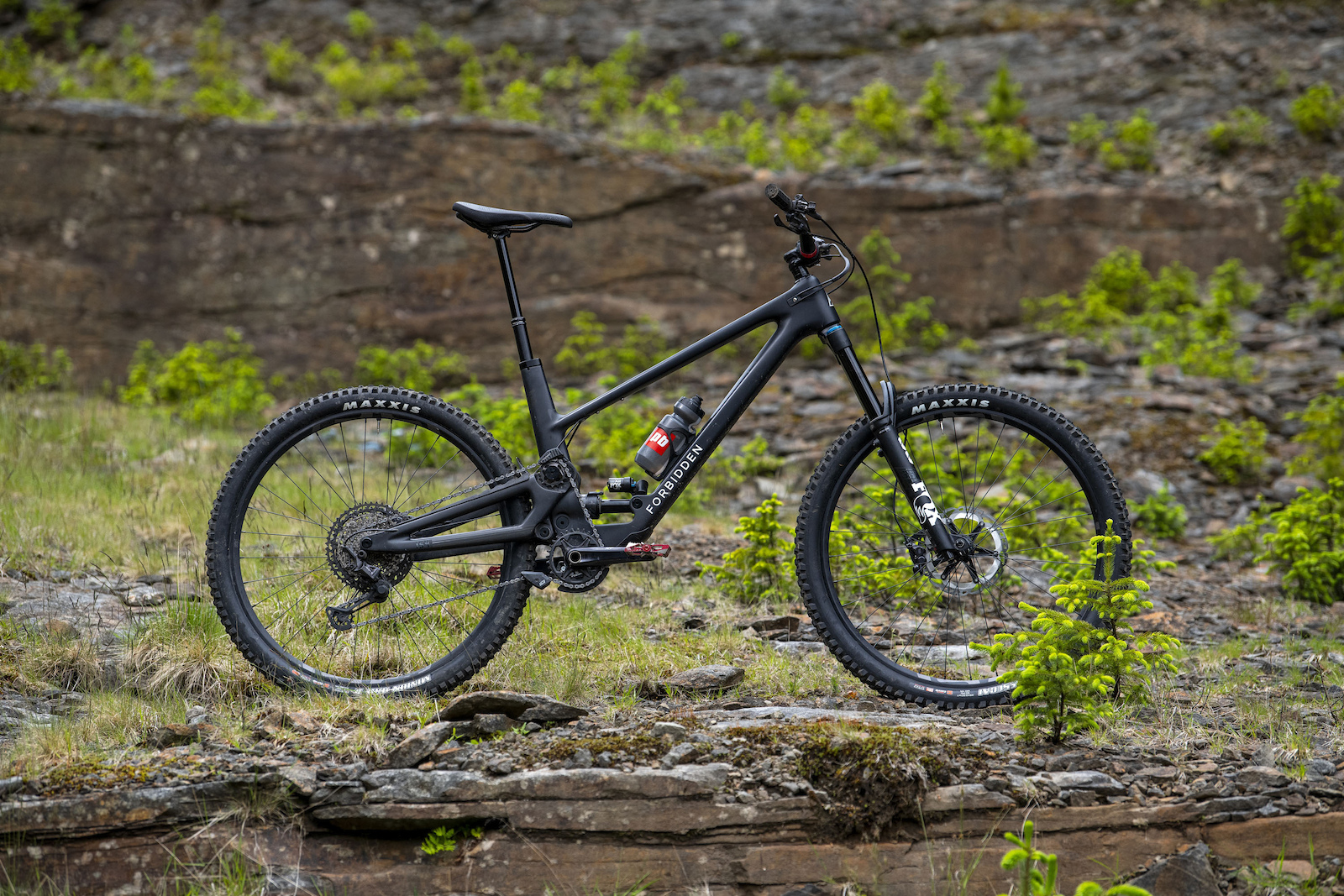
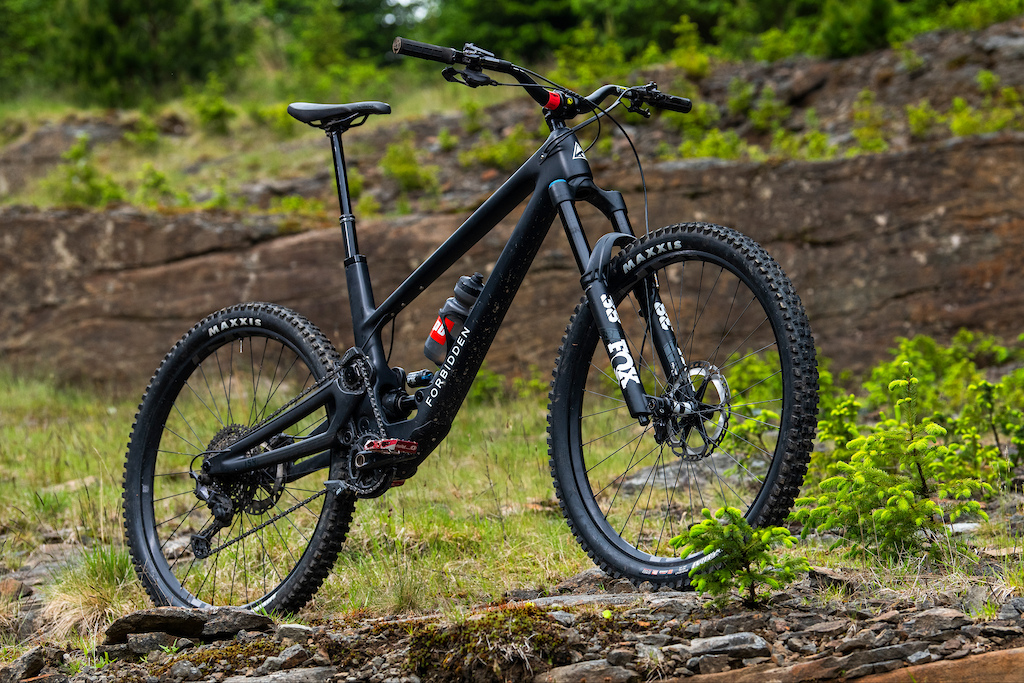
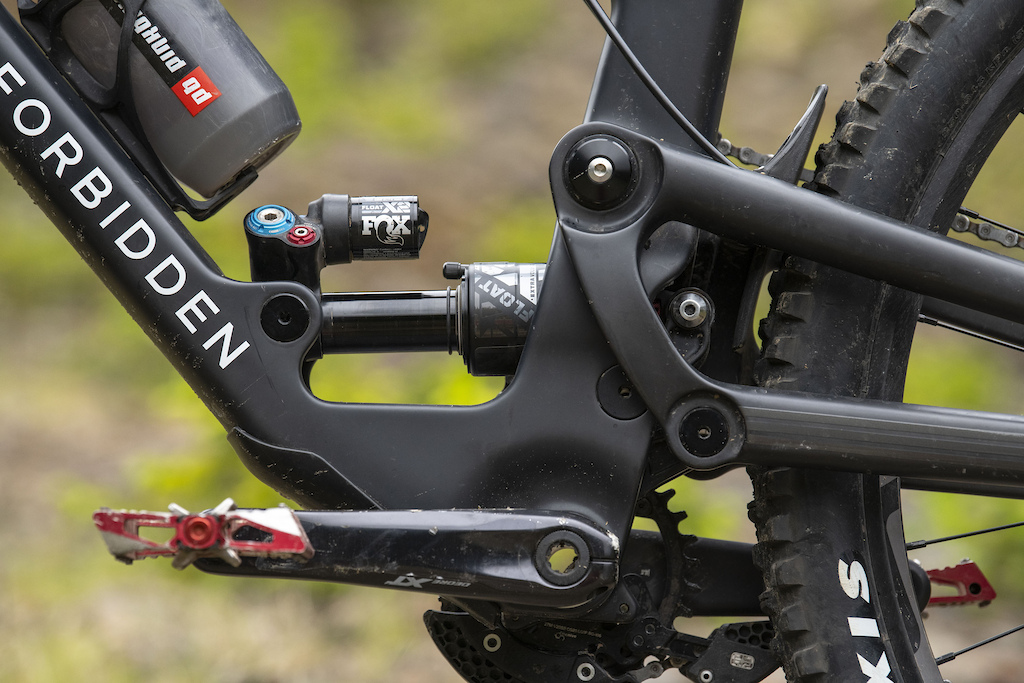
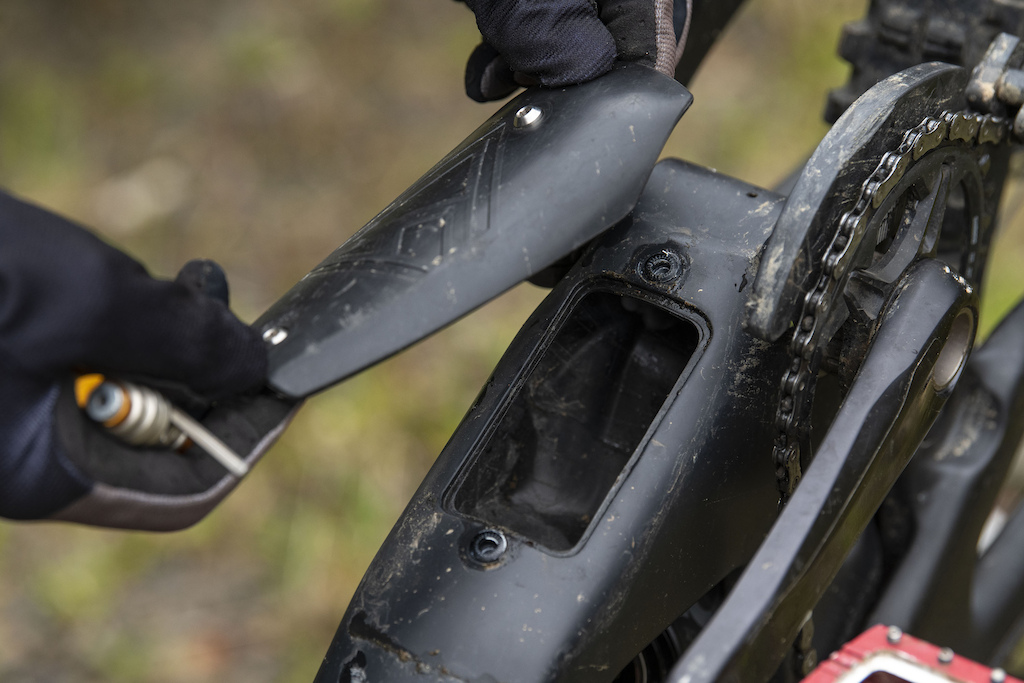
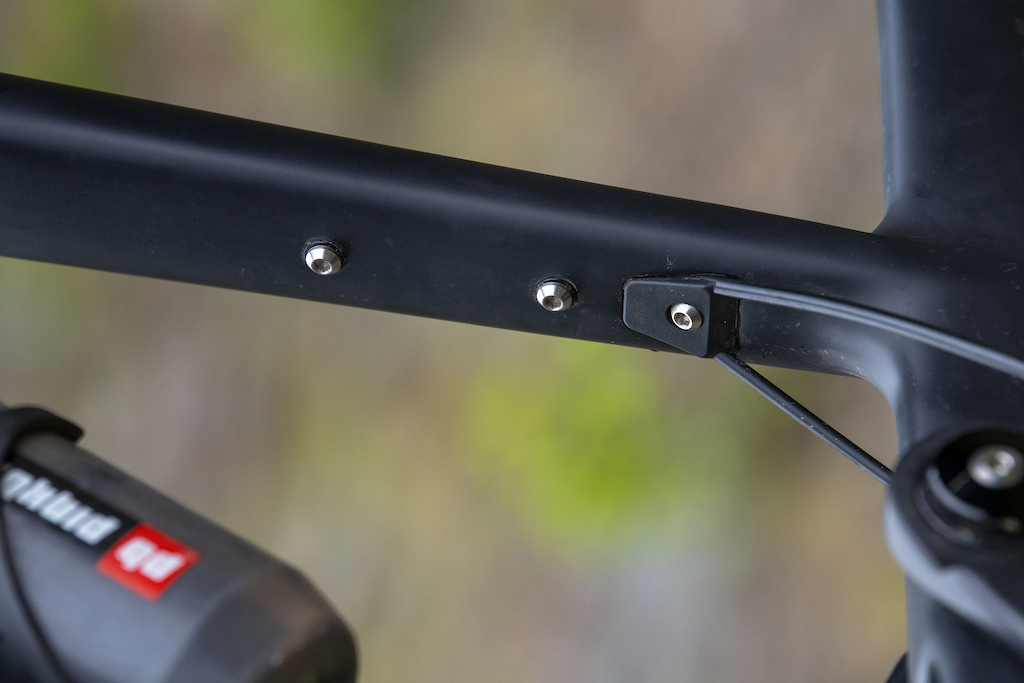
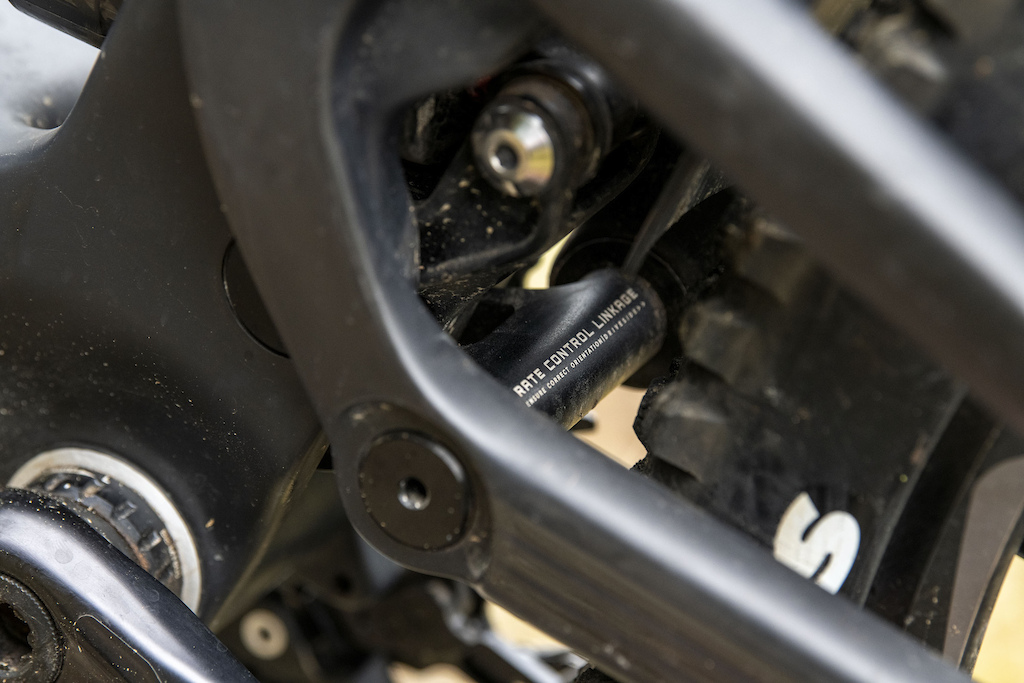
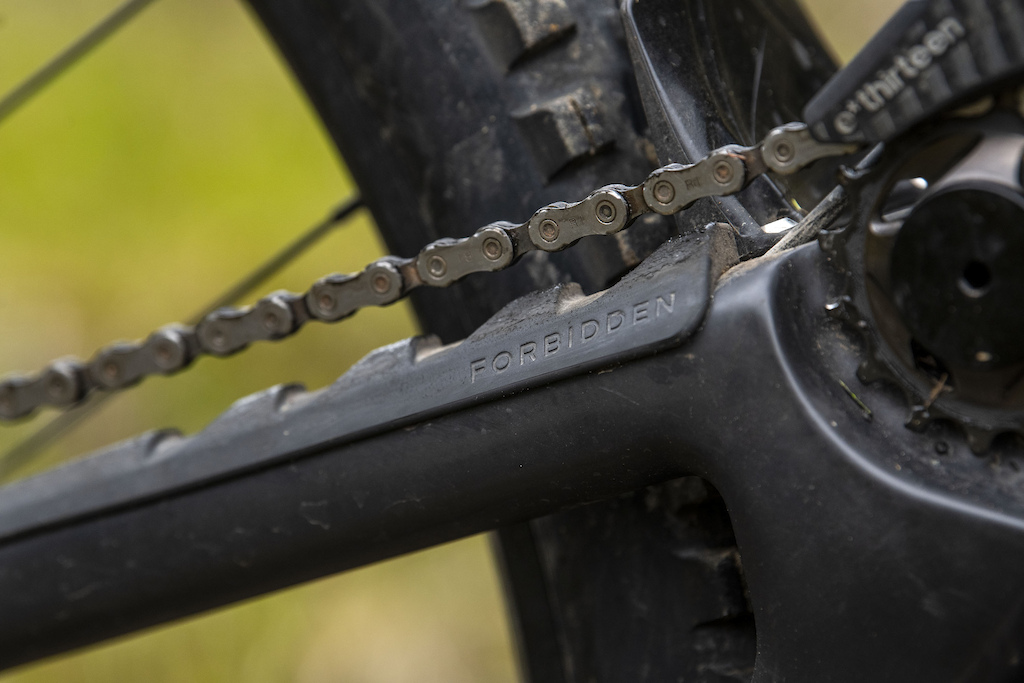








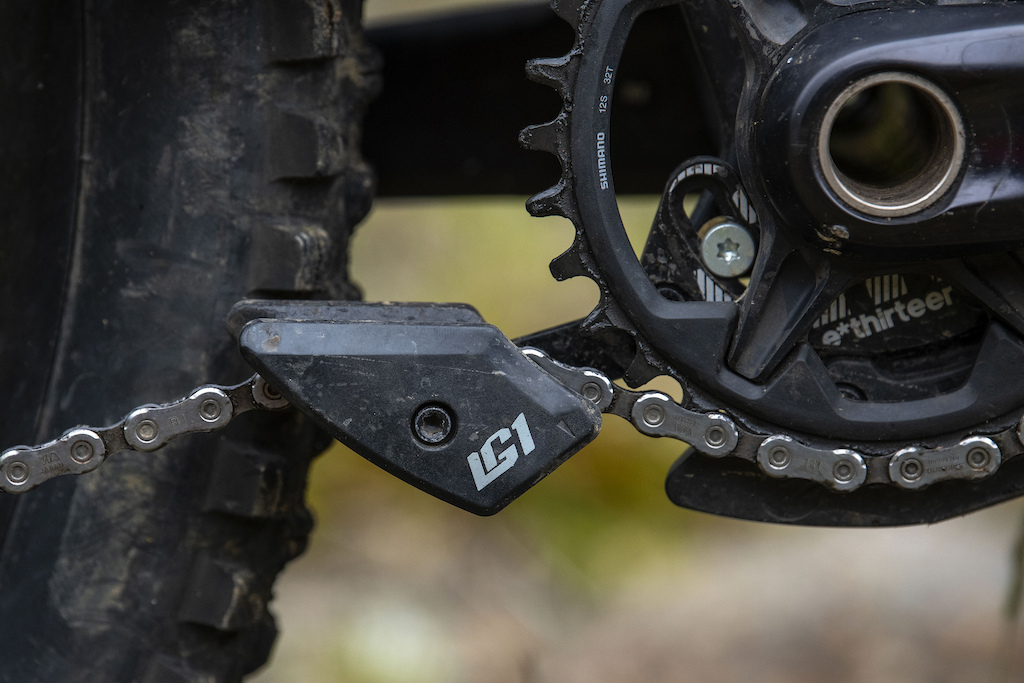
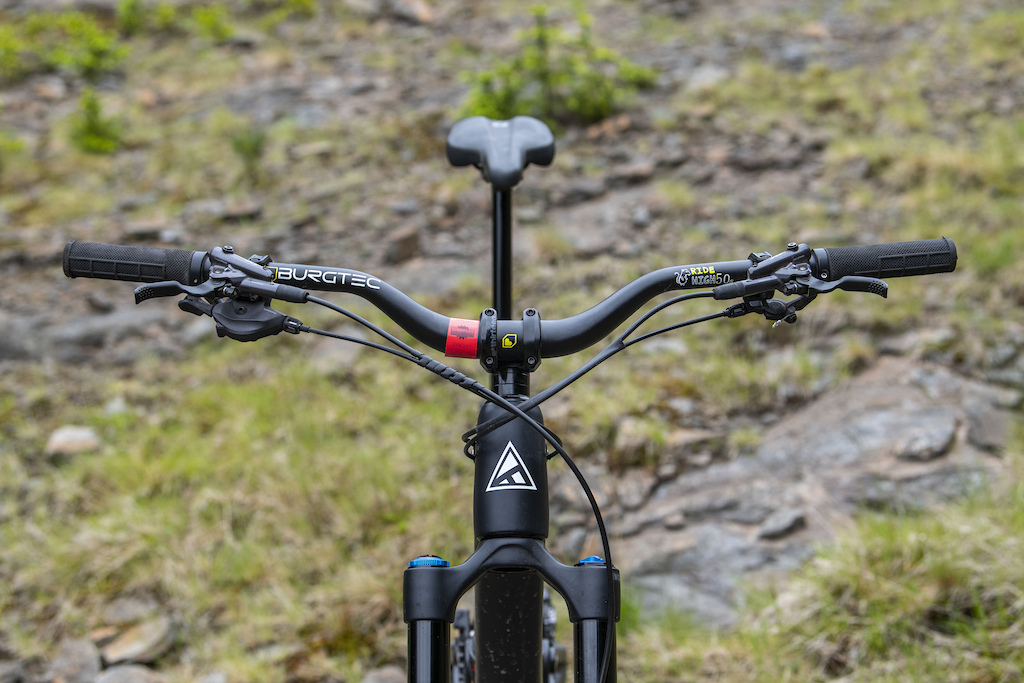
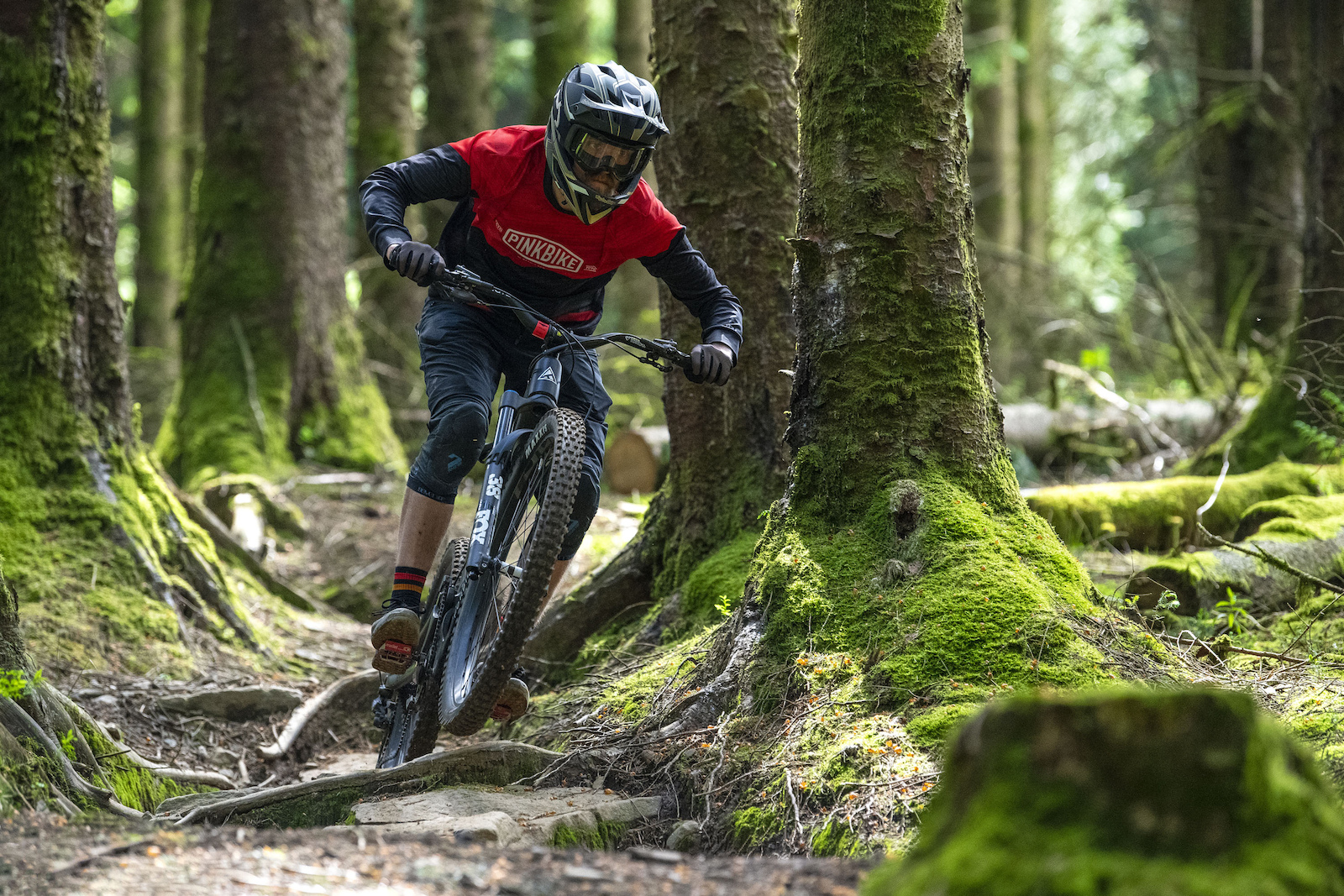

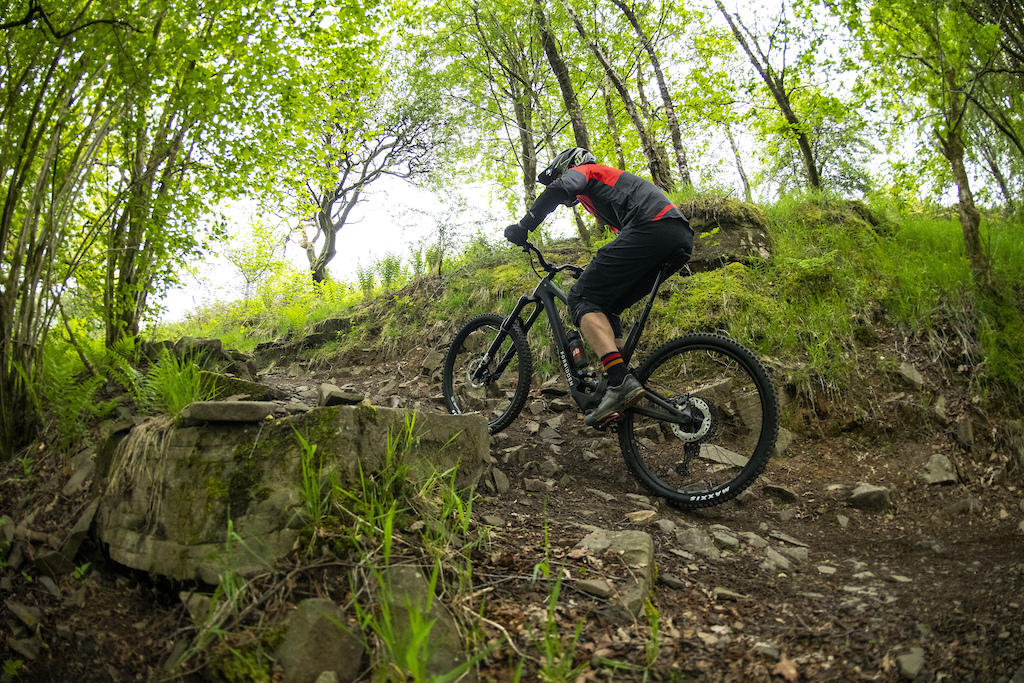
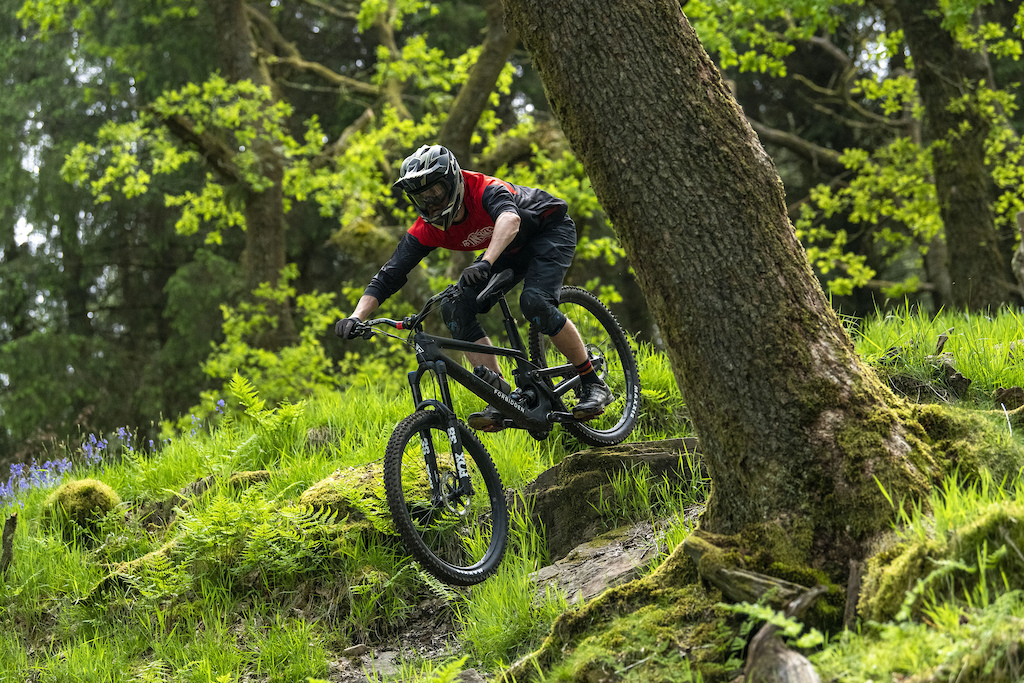
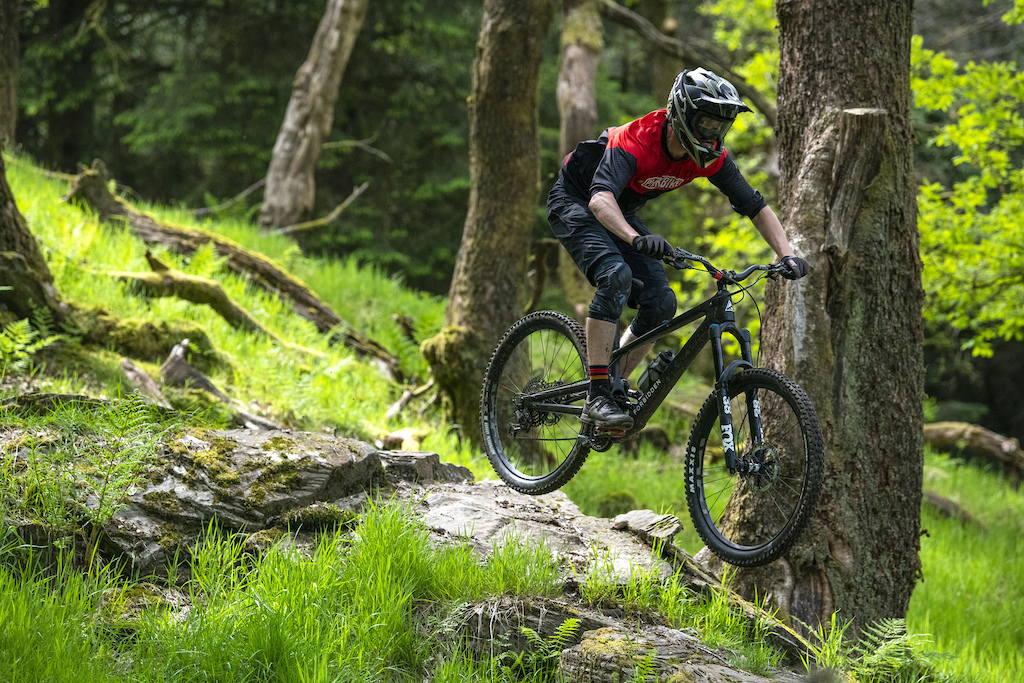

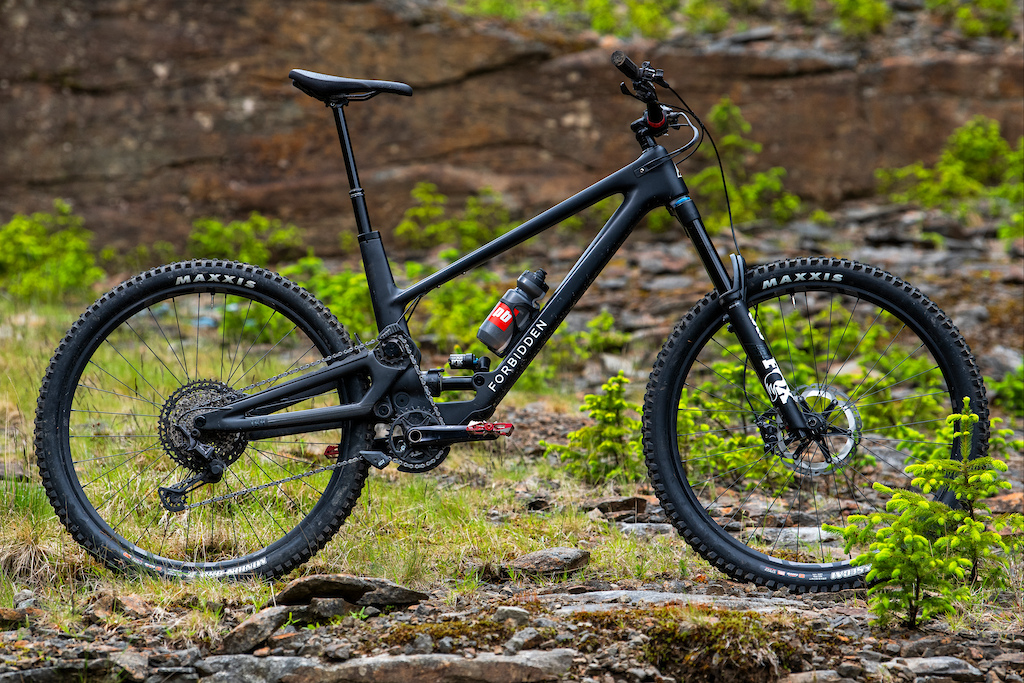

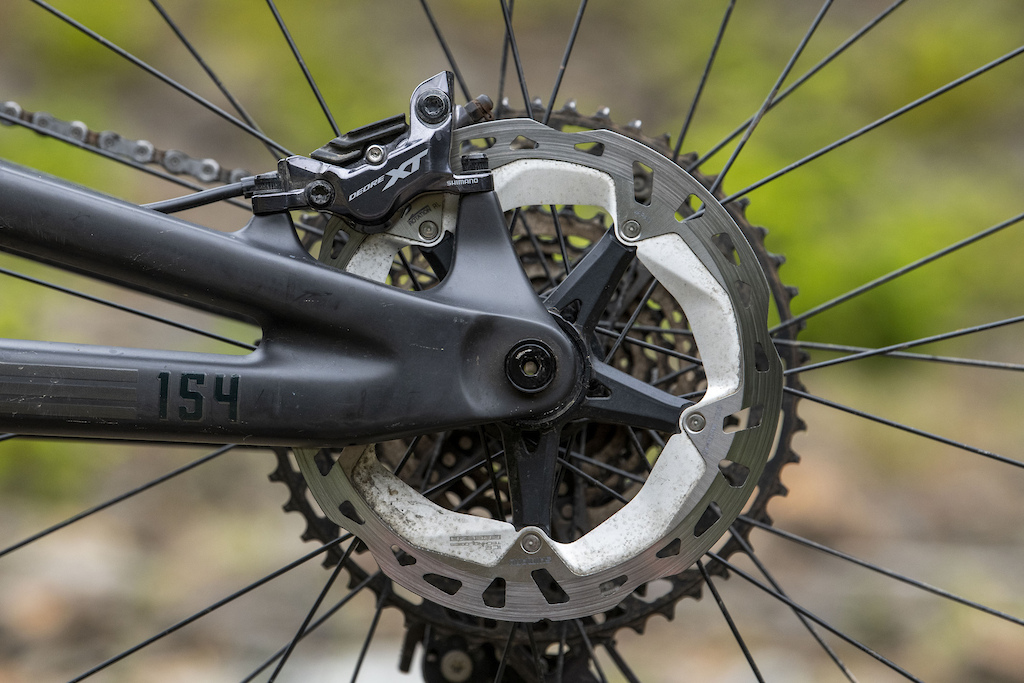


 Member since Dec 29, 2014
Member since Dec 29, 2014
I wonder if the ease of rolling over obstacles can make up for these 2% loss.
And if some moderately high pivot could be useful in XC (maybe a big idler could limit drag ?).
Got a dreadnought on order and am definitely licking at the chops for a cascade link w/ travel bump.
zerofrictioncycling.com.au
Using a ultrasonic cleaner and a hot melt wax like Silca ( not wend wax!!) extends the like of your drive-chain by at least 2x. Halving the cost of ownership. The ultrasonic cleaner and wax pays for itself in one cassette lifetime.
@fullendurbro:
6 watts isn’t anything when it comes to just riding in the woods.
6 watts will be greeted with a giant negatory from every high end XC racer.
I have a Trek Stache with 29x3 tires. It’s a super fun bike to ride as a diversion from the norm, and can climb ridiculously loose steep stuff, but how slow it rolls is just unbelievable.
"The 170mm-travel Scott Ransom stands out as an example of a bike with very supple suspension that's still ridiculously light and efficient on the climbs. Does the Dreadnought's high-pivot suspension allow it to catch up to these longer-travel machines on the descents? I don't think it does."
Having owned a Ransom, and now a Dreadnought, I find the above statement the complete opposite for myself on both climbing and descending. I will note that part of this could be attributed to myself being 6'4", so 'outdated' geometry can be multiplied. I am not a 'bike reviewer' and I have not been sponsored to say this or anything. I respect that everyone has an opinion, so here's mine:
Yes the Ransom is a lighter frame, but the geometry and seated position of the Dreadnought make it climb so much easier. I don't have to slam my seat forward and slide even further forward myself, which over time takes it out of your core/legs/arms and hinders you from putting down power efficiently or effectively when needed. The anti-squat on the Dreadnought is amazing, granted I've never had a bike with 'firmer' anti-squat but you do not rely on the shock lock-out to support yourself, which allows the suspension to remain active and work on technical roots/rocks etc providing so much more grip and transfer of power. Firm up the shock for fire roads and non-technical climbs if you'd like. I have only been out on a couple of rides but the climbing is night and day better than the Ransom. A couple of evening's ago I made sections of Technical climbs in Pemberton in the wet (yes it finally rained!) with ease, that were hit and miss on my Ransom in the dry. I was honestly amazed at how well it climbs for it's intended use (going downhill fast). Sure there is a decrease in wattage or whatever with a high pivot and idler pulley, however it's geometry, seated position and anti-squat make up for a little decrease in efficiency by being way more efficient elsewhere.
Then when you go downhill this thing comes alive - We've all heard about it's character here, so I won't go on about the amazingly supple yet supportive suspension, weight distribution etc. etc. It likes to go fast and I find it wants to generate speed even on mellow sections of trail. Yes it is harder to manual, but that's a given and a trade off for the stability. I have no issue manualling through terrain, bike park rollers etc. It felt like going from and 'older' style 26" downhill bike to more current geometry and 27.5" wheels in 2016 or so - More stability, grip etc. with a loss in playfulness. Then you get used to it and make it playful again. Those older 26" downhill bikes would now feel real twitchy nowadays whereas before they were the norm.
Yes there are a couple of issues with rocks between front and rear triangles. It's good to hear about issues with cable entry ports, something I shall make sure to address! Hardware coming loose - Unless it's happening every single ride, this is not uncommon with any new bike that I have had. If you're not doing a solid bolt check and torque spec, wheel check and tension etc. etc. after your first few rides, and then frequently as regular maintenance, then you're doing it wrong I'm afraid.
In summary - This bike descends as good as people say and feels very well balanced and comfortable. What surprised me is how well it climbs too, which is an additional plus!
Now this is my personal thinking, but I suspect pedal bob has a smaller effect on climbing efficiency than other things, like lateral stiffness, weight and as you pointed out good body position. An idler adds drag and weight.
Im not saying you arent correct, just that you are massively biased.
FWIW, I had a few high pivot bikes a few years ago and moved away from them. At first I also loved them (maybe bias?) but the compromises always got me in the end. Technology and trails have changed since then so Im interested in trying one again - but only on a DH.
There are many great bikes out there to compare. Yes a 'hypothetical' revised 2022 Scott Ransom with a steeper STA would be better and remove that flaw that I mentioned... So now imagine a revised high pivot frame with ‘a more efficient' idler pulley, therefore no 'added weight or drag'... Apples for apples.
Pedal bob is multiplied the further back your centre of mass is as it acts as a bigger ‘lever’. In my opinion, pedal bob has a bigger effect when on steeper and more technical climbs. Yes the Dreadnought is heavier, and there is some 'inherent drag’ from the idler, but I am telling you from back to back real life experience on both bikes that the Dreadnought climbs better. No doubt about that. And it descends much better too.
This frame does a lot different, and with it having chainstay length proportionate to each frame size is amazing. The Scott for example, has the same size chain stay on a S and XL - So easy to manual for myself on an XL, but felt like I was hanging off the back in the steeps, in chunky terrain and when at higher speeds. The Dreadnought is so, so much more comfortable in these instances. And that’s the kind of stuff that I like to ride. I know a few other tall riders have mentioned the same on similar XL bikes with non-proportionate chain stays.
So you have found that your high pivot/idler bike adds much drag? Or just what you’ve heard on the internet? I would agree that there must be an increase in drag. Do I feel it? - Hard to say. Does it climb worse overall? - No, in my experience it climbs better. Does the geometry and seated position make the bike climb better and outweigh the ‘increased drag’? - Yes.
-------------
@russthedog: What makes my view biased?
Technology, company’s investment in R&D etc. sure has changed since the first high pivots were realized years ago. It’s like when 29’ers were first introduced, the first generations were not fun on anything slightly steep and technical when you needed to move the bike around.
Also, I managed to build my Dreadnought for not much more than I sold my 2 y/o Scott Ransom for, of similar spec. Previously I had a DH bike, but I sold that and run my Dreadnought in the bike park. For what I am after, the Dreadnought is better in every area, so I’m stoked!
Maybe I'm biased because I found a bike that climbs better than my previous trail bike, and descends almost as comfortably as my previous DH bike?
--------------
At the end of the day, the Dreadnought is a burly trail bike designed for chunky terrain and gnarly trails, while also built to DH standards. For myself living in Pemberton/Whistler BC, this is perfect.
This bike would not be my first choice if I didn't live/ride somewhere with steep, technical trails.
I'm a pretty bad engineer, but I suspect changing the STA is going to be easier to do than somehow creating a more efficient idler pulley than anyone else has created.
My initial comment was purely my first hand experience riding the Dreadnought coming from the Ransom, same as the reviewer compared. I personally found his review biased, as much of what he wrote was the opposite to the experience I have had from riding both bikes, but I would potentially attribute that to where these bikes were ridden. Would a 120mm trail bike get a great review on steep and technical terrain, probably not.
Had you also moved from a Ransom to a Dreadnought?
Also is the bolt everyone has coming loose the one that bolts to the shock body?
Warranties must be done in a way that is compatible with a normal use case. If your warranty terms are completely different from a regular use case then either A) you have a problem with your product or B) you are just using it to bail yourself out in case of failures.
Just imagine: "Seized engine at 1000 miles? Hey, our warranty doc states that user must check engine fluids before each start."
Yes, plenty of companies in different fields do this, but is nonetheless a crappy way to do business.
Honestly, if these reports are indeed correct, both in regard to the issues and Forbidden's response, I unfortunately can't see them to last very long. Up and coming companies can achieve success and growth with quirky products (as the Dreadnought seems to be), as there is always a market for the product concept or indeed a niche of consumers who indeed gain with the characteristics. But bad reliability or worse, service, that's a nail in the coffin.
The bolt in question sits within the frame as part of the linkage, connecting the shock to the linkage. . It’s definitely not one you’d check every time you rode.
Friggin A, bike companies should 242 the threads on shock hardware, totally agree, I think teams of enginerds deem it unnecessary weighing the benefits against the cost of an added step at assembly. It sucks people have to deal with that. Also, it is for sure on the owner to be on top of stuff, especially right after you get something new and stuff is working itself out in the first few rides. Also, I get peoples frustration but unfortunately, yelling about what you think warranties should cover after poo hits the fan doesnt get you anywhere. And saying stuff like " I would have told them no, you're sending me a brand new frame for free." @charvey17 is just uninformed, and most companies would find the nicest way of ignoring your rudeness.
Warranty is for manufacturing defects, not your lack of maintenance.
The bolt in question on the druid is completely accessable on a bike stand.
Loctite is a bandaid solution; more torque is usually the answer. Personally I would like to see stainless thread inserts to allow more torque.
The amount of bolts I found loose at a bike shop was insane, this one is just very important.
Yes you should check your bike over before every other ride at the least.
You'll not find a drop of loctite on an aircraft.
Grease reduces friction, allowing increased clamping pressure for the same torque.
Do your lug nuts have loctite?
I was a serial over user of loctite, but it's really not the right solution.
But, every suspension bike I've owned has required me to tighten pivots or shocks between service intervals.
Despite being a small company, they've come out with fixes for bits that weren't so well designed (dust covers on bearings), and have made optional parts like the stainless idler. I'm far from a business person, but it feels like they're really trying to scale up their support, and unfortunately can miss problems like folks described above in the process (In my opinion they should just warranty replace more). I think their issues/problem reporting database needs work so they can catch emerging problems sooner.
www.forbiddenbike.com/collections/small-parts/products/forbidden-shock-bolt
M
They also provided this information:
"For your future reference: We are of the view that the current torque recommendation of 10Nm, when combined with the factory applied thread locking compound, is sufficient to hold the screw tight. However, we have now since validated that there are no undue affects caused by increasing the recommended torque value to 14Nm and shall be recommending that value moving forwards. We recommend regular inspection of the screw torque as well as periodic inspection of the factory applied thread locking compound This compound may become damaged or worn with use, and if this is found to be the case we recommend reapplication using Loctite 243 (blue - medium strength), applied directly to the screw thread. During installation we do recommend the application of a good quality lithium grease to the shaft of the screw, however, it is critical that the grease be kept from the screw thread! Through our technical documentation we continue to promote proper bike maintenance with the correct tools, as such we outline daily, monthly and yearly service recommendations."
I literally pop the side panel off my sled and check the oil tank level and the ground underneath it for fluid before pull starting it. I also test squeeze the throttle and brake before starting. BRP isn't giving me a new engine if I decide to run it without motor oil.
I've had various fasteners loosen on bikes over the years. A torque wrench, proper torque settings, thread dressing all are key to success.
Also it appears it's the Trunnion shock bolt that is loosening up. So... yeah about that... Enjoy Trunnion as your new rear shock standard overlords.
Any Druid & Dreadnaught owners should break out their torque wrenches now and dial it up by 4nm. Anyway kudos to Forbidden for taking care of this
However both were draggier than a traditional bike, so the upper idler does come into play IMHO....
Nobody is going around saying "Yeah, well the fork travel is rated at 160, but when you calculate vertical travel due to the 65 degree head angle, it's only 145".
If we tilted the bike down a steep hill, so that the direction of rear travel was tilted enough to be straight up and down relative to gravity, would we say that the fork and high pivot suspension get a full 160, but the backend of the conventional swingarm only gets 145 now?
Oh wait, that's actually what happens when we're riding downhill!
It helps me to picture a bike with 100mm of purely vertical travel and one with 100mm of purely rearward travel. The vertical travel bike will be able to reduce transmissibility - that is if you go over a 50mm-high bump, the chassis will move up and down by less than 50mm, ideally much less. The rearward bike, however will have 100% transmissibility - meaning the chassis will move up and down 50mm for a 50mm bump. However, as I alluded to in the article, the rearward bike will reduce the velocities at which the wheel goes up and over the bump (because the rearward travel slows the wheel speed relative to the bump), so the acceleration (both horizontal and vertical) will be a little less.
The point of this thought experiment is that the horizontal and vertical travel vectors do different things. So it's more accurate to say that the Dreadnought has 151mm of vertical travel and 31mm of rearward travel. Just quoting the hypotenuse travel at 154mm is a little simplistic ; it's not the same as 154mm of vertical travel. Bear in mind that I measured the usable vertical travel at 148mm, which would give around 151mm of hypotenuse travel. So however you slice it, it's basically a 150mm bike.
It seems like a rearward axle path would mostly be beneficial after having already maxed-out vertical travel. Like Commencal does on their DH bike.
With more old school bikes that had a lot more forward than rearward travel, I always felt that it was ignored by the majority of reviewers.
Where do you stand on this subject wrt fork travel? Should fork companies advertise forks as slightly less than they currently do?
All Germany (for example, and all other nations, friend and foe) had to do was match the UK in dreadnaught-class ships to have a competitive navy, which was a lot quicker and cheaper to do than matching all the pre-1906 ships.
And, just under a decade later, in WW1 the ship that started it all was tired and out of date, and saw no decisive battles.
She was then sold to Argentina, renamed “17 de octubre”, then later renamed again the “general belgrano” and became the only ship to have ever been sunk in combat by a nuclear submarine.
Over 50% of Argentina’s personnel losses of the falklands conflict were on that ship when it sunk.
Renaming ships is bad luck.
I weigh 193 lbs, and there are no lbs that I can or would want to lose. Between my gear, my bike and my body weight, the whole system is pushing 235lbs on a 170/170mm enduro bike. I see zero downside to gigantic rotors, and the additional power means a less pressure on the ol' braking finger throughout my ride.
jankcomponents.com/products/jank-moto-foam-kit-for-forbidden-druid-dreadnought
First, great review Seb (as usual)
The Druid is the best technical climbing bike I have ever ridden. It blows my mind what I can just monster truck up and over and how efficient it is at doing it. It just keeps manufacturing grip.
You have to run the sag as deep as Forbidden say's to. If you don't the bike both doesn't climb to potential and doesn't descend smoothly. (I briefly ran a coil over-sprung by only 25lbs and it ruined the bike) Nail the setup and it's better than anything I've been on.
The handling in corners can't be matched by a standard rear design. Once you learn to compress the suspension by pumping the corner and the bike just rips. While you should do that on any bike, this is the only one I've ridden that rewards it sooo much.
These bikes definitely ride unlike anything else which is the whole point of them IMHO. For those whose riding styles and terrain truly benefit from this design's strengths - either the Druid or Dread will be one of the best bikes you have ever ridden.
If your style or terrain doesn't adapt well to this design's strengths you will likely find the compromises of this design not worth it.
In terms of Forbidden's service/warranty - I had rear triangle damage from FEDEX. They got me a new rear assembly shipped out 2 day air 4 hours after I messaged them! No complaints here.
There technical dos's and videos are some of the best I have ever seen.
If I had to nitpick - the stock idler cog doesn't last very long. They no have better versions. I would've liked it if us early adopters got a new idler for free or at cost instead of having to buy the NSB or steel idler at full price. But I'm still happy w Forbidden and 100% buy another bike from them in the future.
These bikes will both likely be in the upcoming field test.
It would be interesting to see a huck to flat video of this bike and a couple others with the same derailleur (the exact same one, since clutch tension varies so much) and in the same gear.
This matches my experience riding a Druid, god for a few things, but not good overall.
That Kool-Aid may be showing it's age
Answer - Orange Bikes Alpine
I would love to go back in time and hand the editors a picture of this bike, just to watch their minds blow. And then tell them the main criticism of the review was "not enough travel". What a time to be alive.
surlybikes.com/uploads/downloads/Surly_2003_Catalog.pdf
1. the need for moto foam / a custom extended rear fender to prevent rocks from chewing through your frame between the seat tube and swing arm.
2. the brake and derailleur cables enter the swing arm unprotected and rub through the carbon there.
For such an expensive frame both seem like an oversight.
That being said I love my Druid, I just wish it wasnt made of carbon and had external routing.
Oh hey whats this Actofive bike........
I look back on that Norco video and the commentary about how long they spent with Fox dialing in he tune. I fear these smaller companies simply don't have those resources and just go with something close enough...not sure this frame design is meant for that...thats been my experience as well on the smaller travel Druid. I was going to buy this thing as I've been feeling the 130mm Druid was not enough but now am re-considering.
until last weekend i was considering selling it to get a nomad or megatower as the rear end just wasnt feeling great.
we dropped the rear air pressure 20psi and bumped up the compression. it made a WORLD of difference. still thinking about a coil but the settigns now made it ride amazing.
loving the bike and i would recommend it to anyone looking for an all-around ride
Having owned a Ransom, and now a Dreadnought, I find the above statement the complete opposite for myself on both climbing and descending. I will note that part of this could be attributed to myself being 6'4", so 'outdated' geometry can be multiplied. I am not a 'bike reviewer' and I have not been sponsored to say this or anything. I respect that everyone has an opinion, so here's mine:
Yes the Ransom is a lighter frame, but the geometry and seated position of the Dreadnought make it climb so much easier. I don't have to slam my seat forward and slide even further forward myself, which over time takes it out of your core/legs/arms and hinders you from putting down power efficiently or effectively when needed. The anti-squat on the Dreadnought is amazing, granted I've never had a bike with 'firmer' anti-squat but you do not rely on the shock lock-out to support yourself, which allows the suspension to remain active and work on technical roots/rocks etc providing so much more grip and transfer of power. Firm up the shock for fire roads and non-technical climbs if you'd like. I have only been out on a couple of rides but the climbing is night and day better than the Ransom. A couple of evening's ago I made sections of Technical climbs in Pemberton in the wet (yes it finally rained!) with ease, that were hit and miss on my Ransom in the dry. I was honestly amazed at how well it climbs for it's intended use (going downhill fast). Sure there is a decrease in wattage or whatever with a high pivot and idler pulley, however it's geometry, seated position and anti-squat make up for a little decrease in efficiency by being way more efficient elsewhere.
Then when you go downhill this thing comes alive - We've all heard about it's character here, so I won't go on about the amazingly supple yet supportive suspension, weight distribution etc. etc. It likes to go fast and I find it wants to generate speed even on mellow sections of trail. Yes it is harder to manual, but that's a given and a trade off for the stability. I have no issue manualling through terrain, bike park rollers etc. It felt like going from and 'older' style 26" downhill bike to more current geometry and 27.5" wheels in 2016 or so - More stability, grip etc. with a loss in playfulness. Then you get used to it and make it playful again. Those older 26" downhill bikes would now feel real twitchy nowadays whereas before they were the norm.
Yes there are a couple of issues with rocks between front and rear triangles. It's good to hear about issues with cable entry ports, something I shall make sure to address! Hardware coming loose - Unless it's happening every single ride, this is not uncommon with any new bike that I have had. If you're not doing a solid bolt check and torque spec, wheel check and tension etc. etc. after your first few rides, and then frequently as regular maintenance, then you're doing it wrong I'm afraid.
In summary - This bike descends as good as people say and feels very well balanced and comfortable. What surprised me is how well it climbs too, which is an additional plus!
why is this when fork travel is measured in the direction of wheel travel? there's a 10% difference between the two with a normalish head angle..
bike seems fine, but like the bronson: shoulda just got the nomad. weighs the same pedals the same, I'd rather have as much travel as I can, all things equal
I hope they did their homework right and are not too short on chain on the big cog.
I played a lot with high pivot geo in linkage and when you have a high pivot with a 50T cog, 150mm of travel is pretty much the maximum before you reach over extension of the derailleur. The lower chainguide is mandatory to have enough spare chain.
Sure this situation (bottom out on the 50T cog) should supposedly rarely happen, but still such a config may put quite some stress on the derailleur.
So high pivot work well on DH bikes cuz they have small cassettes, but on enduro with a big cassette it's trickier. Makes me wonder now if this hasn't played a role in Commencal withdrawing the Supreme SX quickly.
Once you are headed down a trail repeatability becomes a massive issue. You are no longer able to stare at the power in real time and hold it steady. And while I assume Seb is a drastically better rider than me and could get closer to accomplishing the folllowing: going over the exact same line in the trail, with the exact same breaking beforehand seems nearly impossible.
Based on this you get the worst of both worlds, DH bike climbing with light trail level descending?
Comparisons bwith other HPP design bikes would be good too. Deviate Highlander 150 for example looks a close comparison.
I have heard about cable and stone wear on the frame which would be a concern too. These are not inexpensive frames.
Indeed comparision with other HP bike would be great.
The bottom bracket moves to create the different chain stay lengths, not the main pivot.
The suspension pivots never move, that would be a pain in the arse to do for every size
But can they? Moving the BB moves the CG of the rider, which would have an impact on kinematics. Sure, it's the same kinematics relative to the pivot, but if the pivot is moving relative to the BB, the kinematics relative to the BB cannot be the same.
So all those bikes must also be lacking in the vaunted "mid-stroke support". Because if braking puts it deep in the travel (literally the definition of high anti-rise), then it will be in that more "supportive" portion of the travel, which would mean it's definitely firmer/harsher than nearer the top of travel where it would sit on a less anti-rise design.
I see my other comment got deleted for laying some smackdown to the guys with a boat ticket to board the SS Sheep.
Glad I sold my Deviate frame for what i paid.
Still what kinda normal trails are these designed for? i fully expect to see this, the range etc on blue and single black trails where a normal pivot would probably be faster lol.
Isn't the location of the main pivot the crux of the single pivot design? If that were the case, why even go high pivot at all?
Hulk smash derailleur!
Hulk smash bottom bracket!
Hulk smash linkage!!!
Trail rider? too big and lazy unless going mach 3.
AM rider? maybe if you dont want to have any fun.
I seen a guy who had both at the bike park and he did one lap on the Dread an put it back on his truck and rode the druid for the rest of the day.
I picked up a Range when it first become available and rode it several times, it reminds me of a "suggested size Meta AM" will bulldoze at speed but turned like a dragster at any corner, luckily my friend bought it off me for what i paid for it because he couldnt get one.
Most people are jumping on the high pivot train but yet dont own one...
Look at EWS bikes, not so much the high pivot but sizing too, all the fast guys are having to downsize and run alloy wheels, so remind me where we need big bikes, carbon wheels and high pivots? - the only place that needs high pivot is DH racing because they are shorter bikes that monster truck(and they grow in length due to high pivot)
According to PB users you MUST have: Carbon frame with high pivot, adjustable cs, 62 HTA, 90deg STA 500mm reach in large, 1280+ WB in large, must have a water bottle mount that means you lose out on r&d gone into suspension(hello pivot fan boys)
WAO/ENVE wheels with 400$ hubs that make zero difference(infact offer worse kickback), super short 160mm cranks for a bloke over 6ft,
Fox factory suspension because you think kashima makes a differnce to your blue trails.
shimano everything(even though its not better than sram, saints exlc)
DH casing tire/tyres with cushcore even though your out for a pedal on a blue trail
deathgrips
you must be super anti carbon bars because you think they break easy.
you must be anti ebikes because your a arrogant fitness freak if you dont admit it and wont accept those users have more fun than you.
Roll on the downvotes, because downvoting this proves my point that they agree with it but wont admit it and wont explain their justification on their 10k MTB.
p.s was good fun at maribor this week, roll on the WC, will any of you be there? doubt it.
^^^^This
So many people rolling blue flow trails on stupid expensive tricked out bikes with 30% more travel than what would actually make the trail fun to ride.
Usually the bike is spotless, unloaded from a recently adventuremobile with a roof tent that rarely gets set up and piloted by a rider in this year's perfectly clean bike apparel - who then gets dropped by someone on a 10 year old bike who pedaled to the trailhead instead of driving